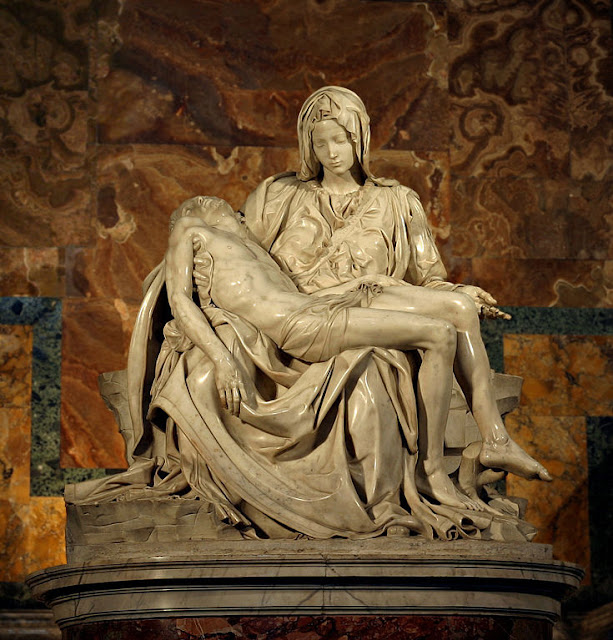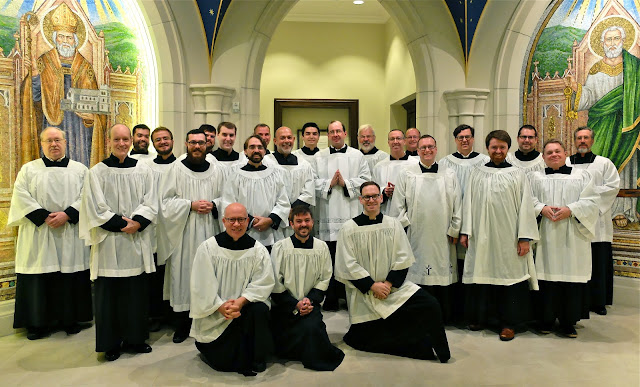Does Your Parish Mass Resemble Frankenstein's Monster?
[ 7 minute read ]
The haphazard way in which many (most?) diocesan Eucharistic liturgies, i.e., Masses, are celebrated points to an enduring problem: poor catechesis and an obstinate refusal to respect the fundamental nature of the Holy Eucharist. It may be that ignorance about liturgical standards factors into the problem, and that could explain why improvements to the ars celebrandi, i.e., the manner in which the Mass is celebrated, are long overdue throughout the entire Church. That is, the Latin hemisphere of the Church.
The Holy Eucharist is defined as the sacrament that contains the Body and Blood, Soul and Divinity of our Lord Jesus Christ under the appearances of bread and wine. | A Catechism of Christian Doctrine (The Baltimore Catechism No. 3); Third Plenary Council of Baltimore 1954 AD
Surely the preceding note is enough to inspire respect for the Liturgy and to encourage beautiful celebrations of the Mass by clergy and servers. The fundamental character of the Mass and conformity to theological and practical principles must be embraced by those who serve in the sanctuary and who sing the praises of God, which is to say knowledge of essentials is required, not optional, if we seek to honour the Lord. Adequate formation must be offered to ensure the reverent celebration of the Mass at all times.
Anything less than a robust liturgical catechesis results in the many deviations (from what should be the honourable worship due to God) that Catholics have witnessed for the past 50+ years. The Mass has, very sadly, suffered from too many disfigurements that should cause every Catholic to shudder because of the weight added to Christ's sufferings by liturgical abuses great and small.
Christ, the Man of Sorrows, looks upon us from His throne high upon the Cross and says, "Why do you persecute me? (Acts 9:4)"
His limbs were nearly frozen, and his body dreadfully emaciated by fatigue and suffering. I never saw a man in so wretched a condition. Letter 4
Here Walton describes Frankenstein at first sight. His body is thin and malnourished, he looks wretched, and overall is a sore to the eyes. Now, if we take Frankenstein and compare his look at this moment to his creation’s hideous appearance, you’ll find that both raise high concerns. You see, by the time Frankenstein creates the monster, he slowly begins to mold into one himself. He begins to feel alone, apart from society, and stops caring for himself to such an extent that he receives worried looks similar to those the monster received, minus the fear. | Kibin. (2025). An analysis of quotes in Frankenstein, a novel by Mary Shelley. http://www.kibin.com/essay-examples/an-analysis-of-quotes-in-frankenstein-a-novel-by-mary-shelley-49hf6ttt
Frankenstein?! What do Frankenstein or his monster have to do with the Eucharist? The monster, formed of many dead into one brought to life, could remind us of resurrection. That said, should man attempt to play God, he should not be surprised that he is brought very low, again, for believing the lie of the serpent (Genesis 3).
Of course, the resuscitation of the dead is not the same as the resurrection for which we Catholics hope. Christ brought Lazarus back to life (John 11:1–45), thereby revealing Himself as the resurrection and the life.
John 11:21-26 | Martha said to Jesus, “Lord, if you had been here, my brother would not have died. And even now I know that whatever you ask from God, God will give you.” Jesus said to her, “Your brother will rise again.” Martha said to him, “I know that he will rise again in the resurrection at the last day.” Jesus said to her, “I am the resurrection and the life; he who believes in me, though he die, yet shall he live, and whoever lives and believes in me shall never die. Do you believe this?”
Jesus' own resurrection confirmed absolutely that Jesus, not Doctor Frankenstein nor any other pretender, is the way, the truth and the life (John 14:6).
Jesus gave us the Eucharist so that we might receive Him and be made holy and saved for eternal life. When we participate in the Mass, we witness the resurrection of Jesus. We are gathered into the offering of the Son to the Father.
Those who would pretend to be masters of the Liturgy would do well to remember that God, not man, is the author of the Eucharist. Our duty is to conserve the doctrine of the Eucharist and preserve the dignity of the Mass. We who are many are one body (1 Corinthians 12:12-27). We are dead without the saving love of Jesus Christ, the Physician of souls who knits us together as one body, alive through Him, with Him and in Him.
Does the person who inflicts his sins upon the Lord in the Eucharist "mold into (a monster) himself?" A liturgy is valid if configured to the doctrine of Christ preserved in the Church. Lacking validity, a liturgy is a monster, dead body parts sewn together and jolted into action to mimic a living entity.
1 Peter 2:24 | He himself bore our sins in his body on the tree, that we might die to sin and live to righteousness.
Consider for a moment a progression from carelessness to causticity.
- Liturgical prescriptions are proscribed by careless clergy.
- Assumption becomes presumption.
- Presumption fueled by antipathy begets arrogance.
- Arrogance hardens into indifference.
- Indifference breeds individual and corporate confusion.
- Confusion becomes a creed of chaos rehearsed into habit.
- Chaos (due to an appropriation of power) becomes a tool used to control, to manipulate.
- The need to control (others, the form of the Liturgy, to distort the teaching of the Church) decomposes into a loss of faith.
9. a loss of faith portends a return of barbarism and conflict.
Who could argue that there has not been a massive loss of faith among Catholics since the end of the Second Vatican Council? Is the Council itself to blame? No. Some critics might argue to the contrary. As Pope Benedict XVI noted, the problem was that a "media council" seized the narrative and distracted the collective imagination of Catholics away from the actual content of the Council.
Link: Pope: media helped spread misinterpretations of Vatican II
https://www.pewresearch.org/short-reads/2019/08/05/transubstantiation-eucharist-u-s-catholics/
"I never saw a man in so wretched a condition."
The Prophet Isaiah saw a man wounded to death - Jesus Christ, the Lord.
Isaiah 53:1-6 | Who has believed what we have heard? And to whom has the arm of the Lord been revealed? For he grew up before him like a young plant, and like a root out of dry ground; he had no form or comeliness that we should look at him, and no beauty that we should desire him. He was despised and rejected by men; a man of sorrows, and acquainted with grief; and as one from whom men hide their faces he was despised, and we esteemed him not. Surely he has borne our griefs and carried our sorrows; yet we esteemed him stricken, smitten by God, and afflicted. But he was wounded for our transgressions, he was bruised for our iniquities; upon him was the chastisement that made us whole, and with his stripes we are healed. All we like sheep have gone astray; we have turned every one to his own way; and the Lord has laid on him the iniquity of us all.
Saint John Mary Vianney, the Curé d'Ars, the patron saint of parish priests, reminds us that our sins have consequences and that
(n)othing afflicts the heart of Jesus so much as to see all His sufferings of no avail to so many.
The priest who serves himself, his own agenda or allows a strange agenda to enter his parish, is a man who designs and produces caricatures of the Mass that displease God, wound the saints, and challenge (deny, ignore) the authority of the Lord and His Church.
On a more positive note, Mass is celebrated with decorum and reverence, with proper respect and dignity, when those ministers ordained to serve at the altar follow mandated practices, the norms, and show a deep sense of awe and devotion toward the sacredness of the Eucharistic celebration.
A well-ordered and meaningful liturgy witnesses to the saving Presence of God, to God Who is All-truth, All-good and All-beauty. A beautiful Mass responds rightly to the Lord's question, "Who do you say that I am? (Matthew 16:13-20)." A beautiful and reverent Mass speaks confidently and humbly to the identity of Jesus, "Thou art the Christ, the Son of the living God."
Psalm 95:6 | O come, let us worship and bow down, let us kneel before the Lord, our Maker!

.jpg)





Comments
Post a Comment
Your comments will be appreciated and posted if 1) they are on topic and 2) preserve decorum.
Stand by your word.